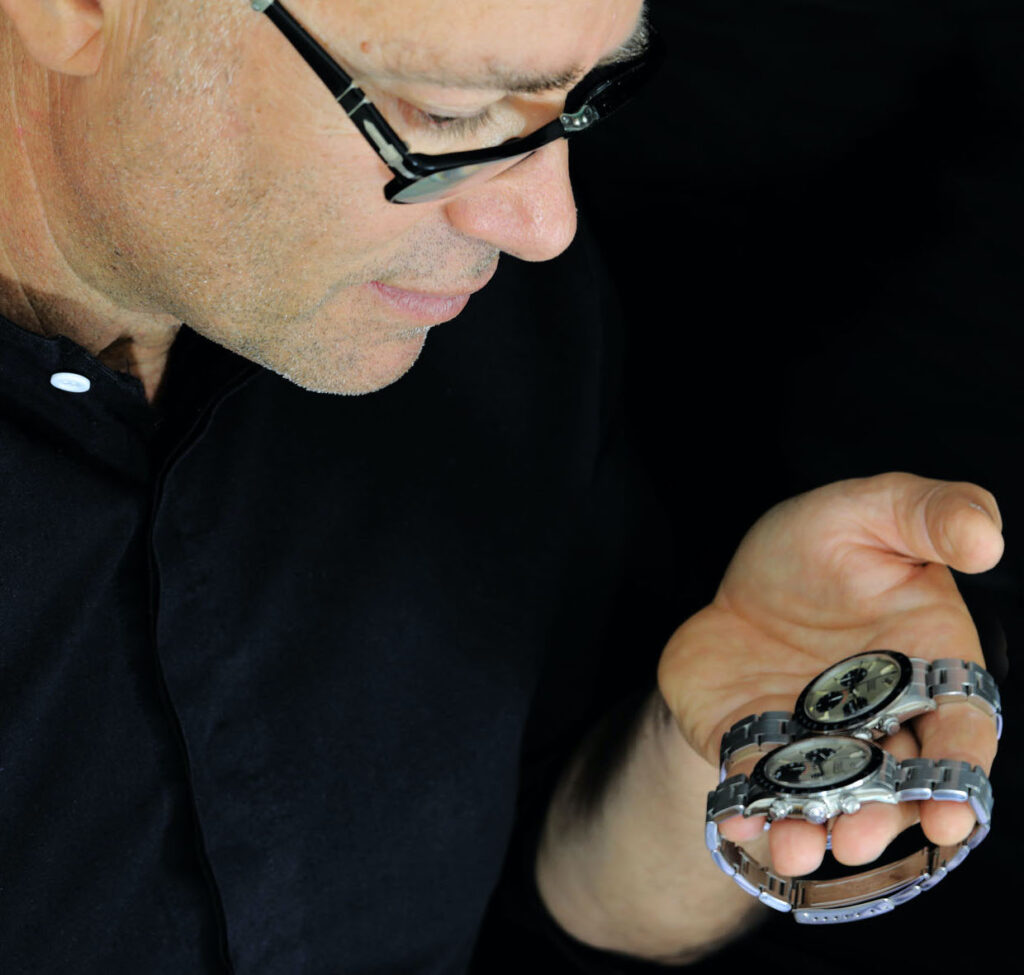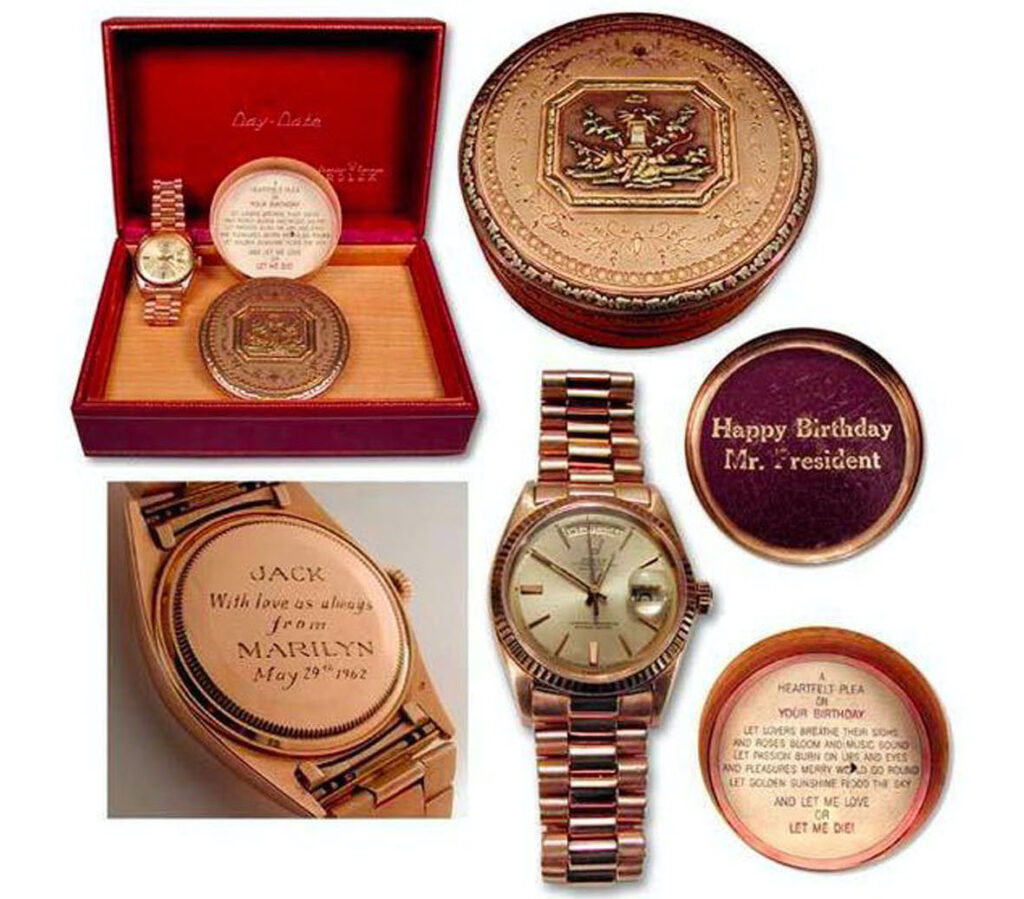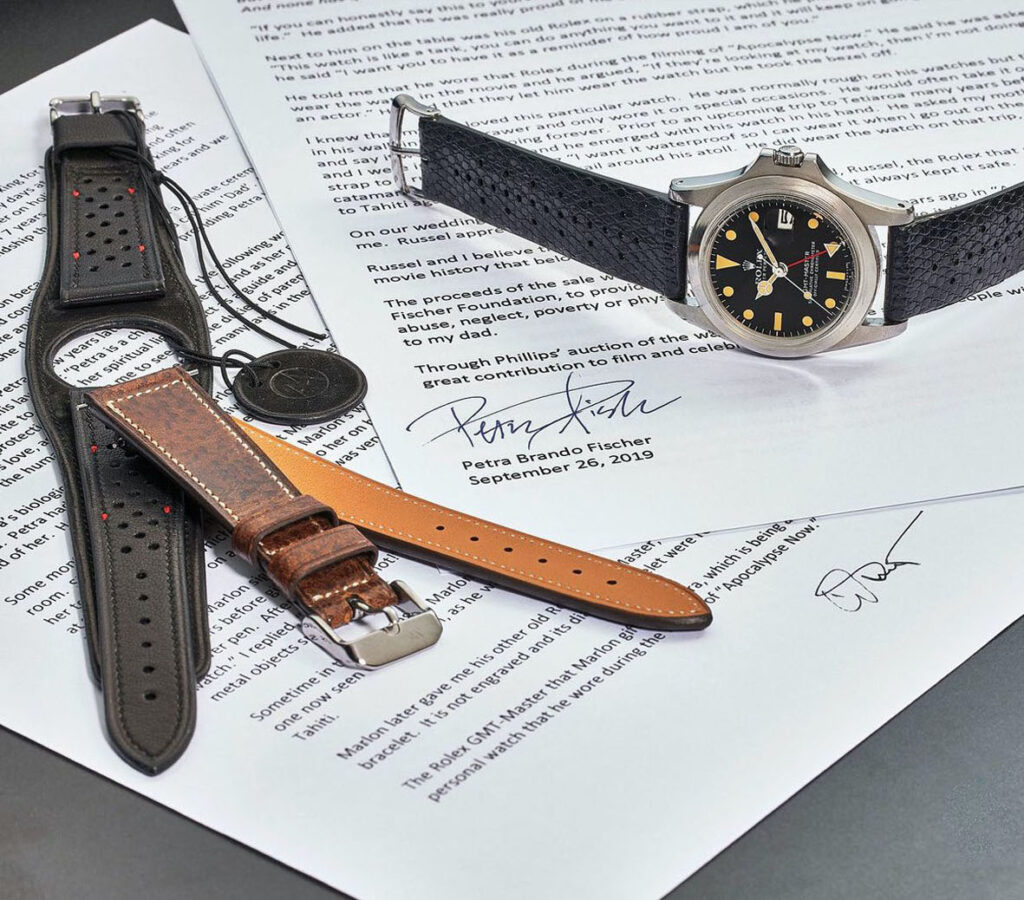Stefano Mazzariol and the Daytona legend
27 February 2023“I’ve always been a watch hunter, traveling around the world. Where there was a story related to Rolex watches, I went looking for them. As in the early 1990s in Oman, where the coat of arms of the sultanate on the dial of Rolex watches – which were state gifts – was considered a political emblem, and many replaced the dial so as to appear neutral. So, I began to travel to Oman with the normal dials, have the logoed ones replaced and take them to Italy. A couple of trips went well, then with the internet, things changed, there was very little to be found and, in addition, the export of any object bearing the state emblem without authorization was prohibited. But in the meantime, I gained experience.”
Stefano Mazzariol is one of the greatest Italian experts of vintage Rolex watches. Stefano was among the first to share peculiarities and information about these watches on the web, as early as the early 2000s. To date, mazzariolstefanolibrary.com is the most complete web site on the world of vintage watches, and in particular Rolex – the only one that allows you to evaluate the genuineness of the brand’s vintage pieces. Author of the best seller “Rolex Daytona A Legend is Born,” and contributor to the cult book “Ultimate Rolex Daytona,” who else could we ask to talk about the Daytona legend but him? “And the curious thing – he tells us right away – is that the name Daytona was later given to the gray variant only, while the one with the black dial was called Le Mans. From my point of view, it was a watch too much ahead of its time for the taste of the period. In fact, at the beginning it was not a commercial success.
It is also curious that after the manual winding models, people anxiously awaited the automatic and today we return to obsessively looking for pieces with manual calibers…
When you enter the loop of success, you go to the origins of that success. And the origins speak of the 6263 with manual caliber and black steel bezel, a watch of which only 12,000 pieces were made between 1969 and 1988: just over 700 a year for the whole world. Very few. And of these, how many contemporary models are left? Very few. In perfect condition? Even less. In perfect condition with warranty? A minimum number. That’s why anyone who knows this world understands why this is a truly exclusive watch. Where exclusivity doesn’t mean going to a boutique and getting listed, but searching for the watch. One of the great collecting motivations is research, especially when you find that piece that meets your expectations.
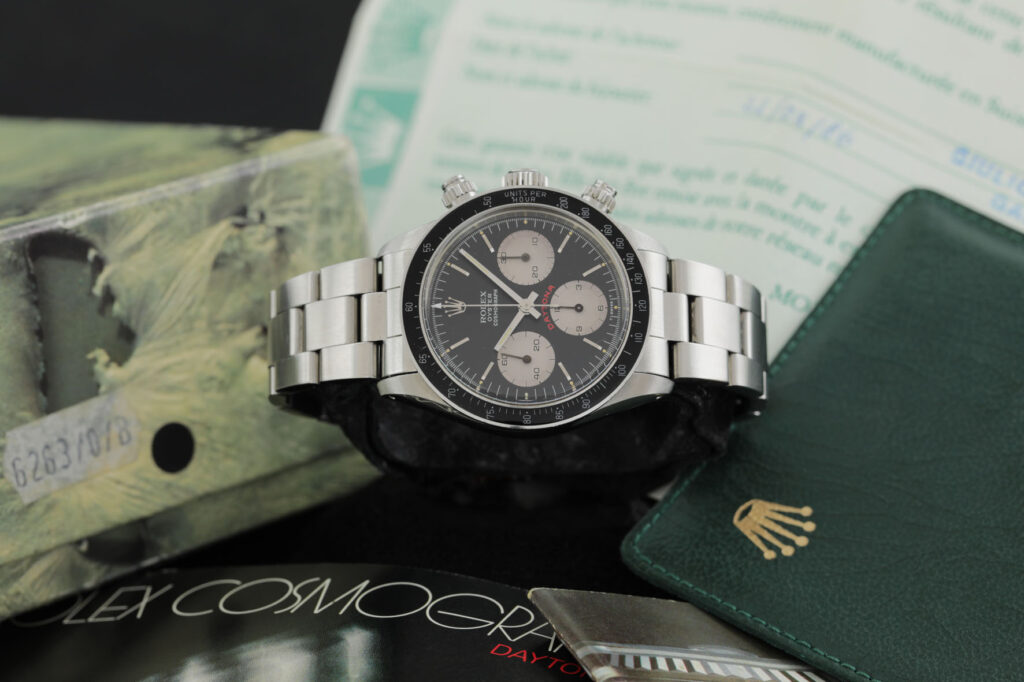
When do you think the Daytona legend was born?
With the 16520. It was the right timepiece at the right time. In the 60s and 70s, with the arrival of quartz, the first watches with sapphire glass, and with the extra-flat watches trend, traditional watchmaking was thought to be over: a massive watch, with manual winding, with plastic glass was totally out of place. In 1988, with the 16520 Rolex found the right chronograph – and they didn’t even expect that success – which also gave a huge boost to collecting. Before then, Rolex sold 700 chronographs a year, because the most popular models were others, the Datejust and the Day-Date. In the 80s they sold some sports watches, but there weren’t today’s numbers or attitude, because the watch was still an elegant complement for the elegant man. And then Rolex couldn’t meet the demand even for the movement, because they didn’t have their own and relied on Zenith. Rolex created it with the second edition, the 116520, but those didn’t flood the market, they continued with their limited production policy, which led to the greater growth of the model. A process that has given birth to a brand within the brand: often we only talk about the Daytona, not the Rolex Daytona.
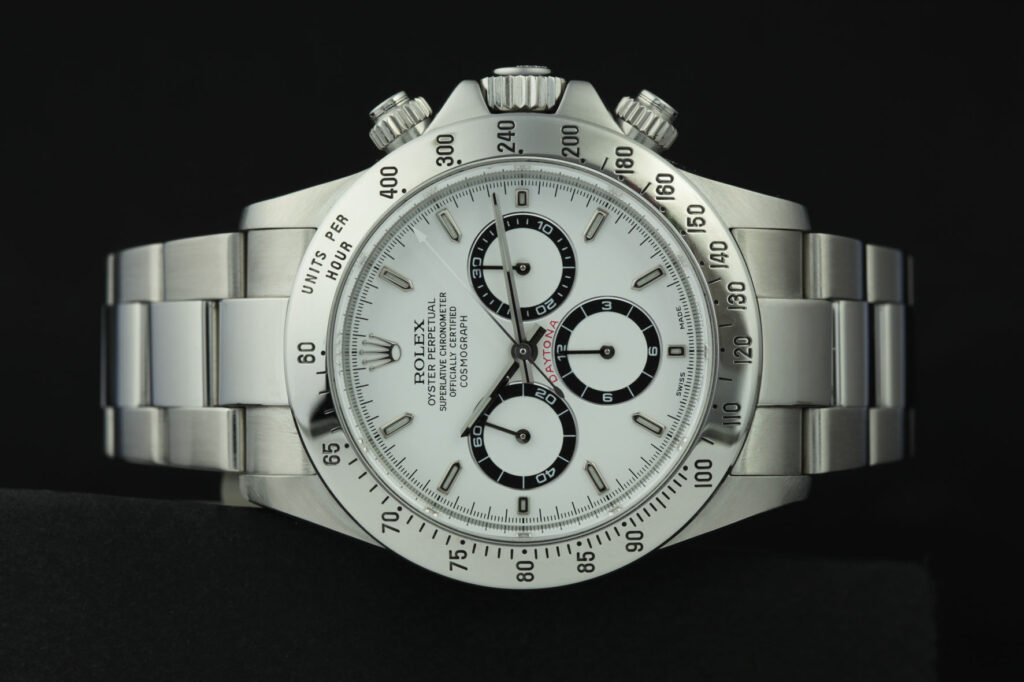
STEFANO MAZZARIOL’S PERSPECTIVE ON AUCTIONS
How do you see the Daytona in auctions?
Auctions reflect market trends. The quality object is always the most sought after and overpaid, even more so if it tells a story, as in the case of the Paul Newman that belonged to the actor. In my opinion, it is also an ugly watch, because it is very worn; if it hadn’t been for Paul Newman, it could have optimistically reached 250,000 euros at auction, but its history has decreed its value (on 26 October 2017 it was hammered by Aurel Bacs of Bacs & Russo, partner of Phillips, for 17.8 million dollars, ed.). These are prices that make sense, because history matters. I also think of pieces like the watch Marilyn Monroe is said to have given to John Fitzgerald Kennedy, or the one Marlon Brando wore in “Apocalypse Now,” (a Rolex Day-Date the first, $120,000, a Rolex GMT-Master the second, about 2 million dollars, ed.) both sold at abnormal prices. The risk is that even watches whose value would be lower will be dragged upwards, but that’s the story of Rolex. Why is the brand so successful today? Because everyone wants to be part of this success, even if they don’t know Rolex history. You can’t compare them to a true enthusiast looking for the rarest variants.
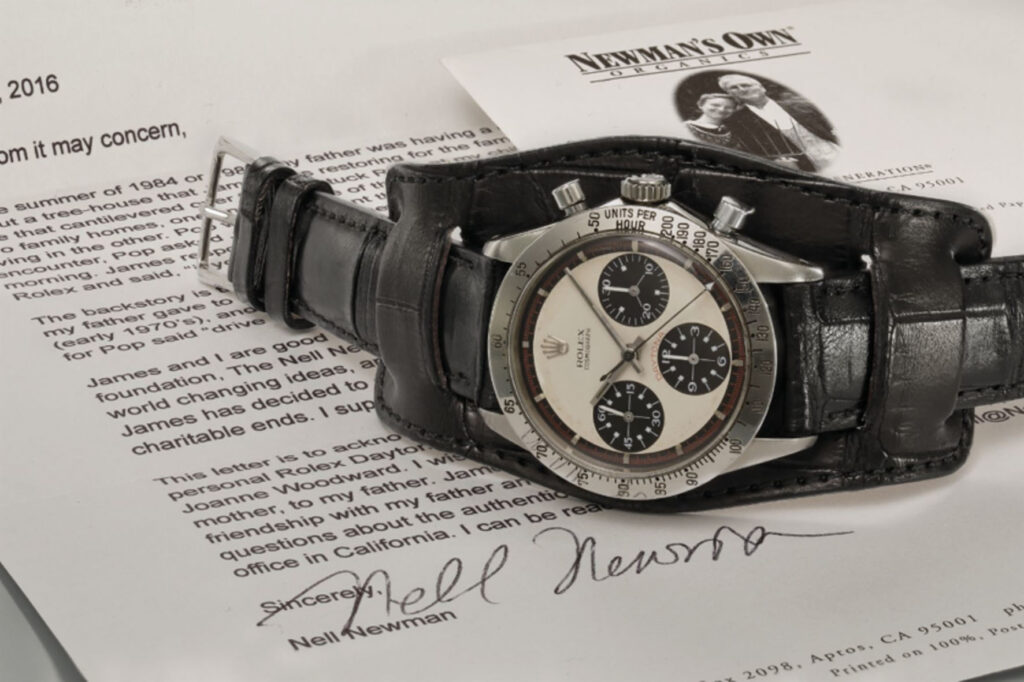
Is it still possible to find beautiful things at auctions, even for the Daytona?
Rolex is famous for renewing without distorting, at least until the 2000s; until then every little difference will influence the price of the watch. That’s why there are still possibilities at auctions and at dealers, but the most beautiful things are increasingly rare. This applies to all brands and even more so to Rolex, because no one has the same number of enthusiasts.
THE FUTURE OF COLLECTING
Do you think their value will continue to rise?
It’s difficult to predict the future. What I can do is evaluate the past. Over the past 35 years, Daytona prices have always gone up. Of course, you have to be able to wait, knowing that you have a beautiful watch in your safe and waiting for the right person to buy it. Especially with vintage watches, you must always aim for the top, because the only ‘flaw’ that can be disputed and admitted by the enthusiast who wants to buy a particular watch is that it is expensive. However, as I say: the quality remains, the price is forgotten.
Are collecting and profit compatible?
Yes and no. Collecting is a phenomenon that exploded with my generation, before there were other collector’s watches and the enthusiasts pool was much more restricted; many people my age or older think about what will happen to their collection after they’re gone. This is why I believe that, within the next 20 years, some watches that have disappeared will reappear on the market through important dealers or auctions, to return to being a safe haven asset such as others are.
By Davide Passoni

